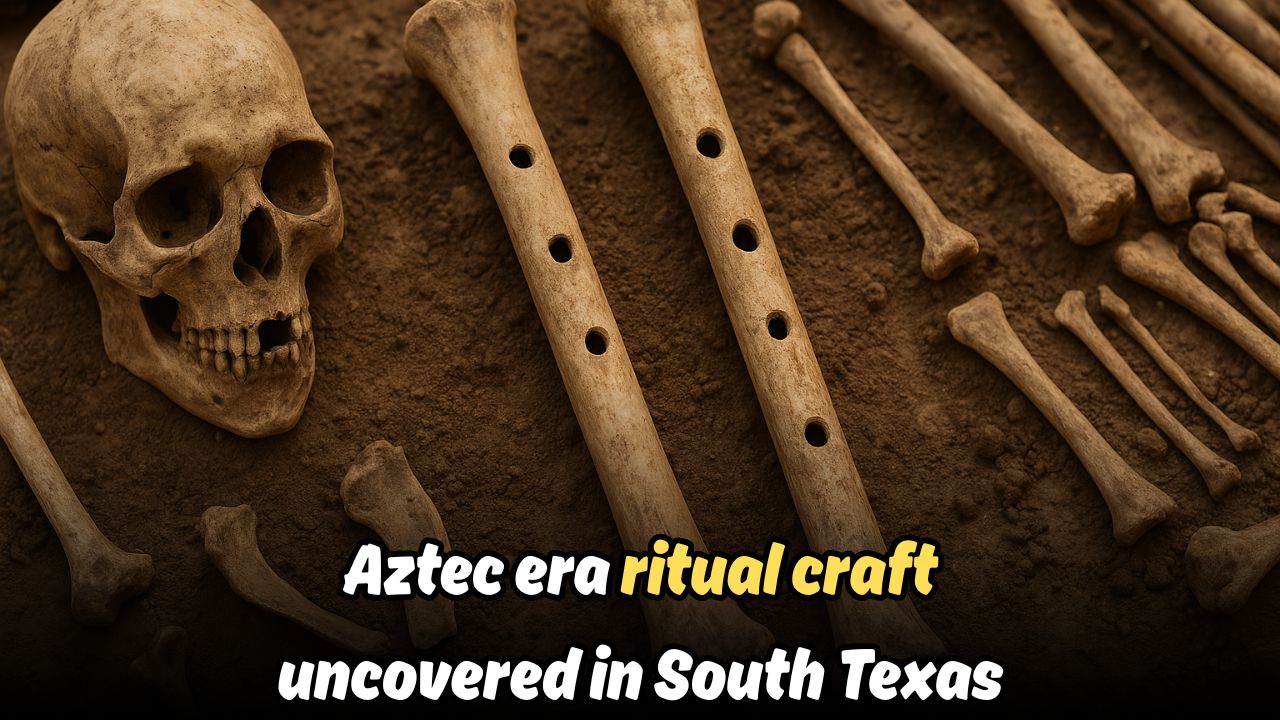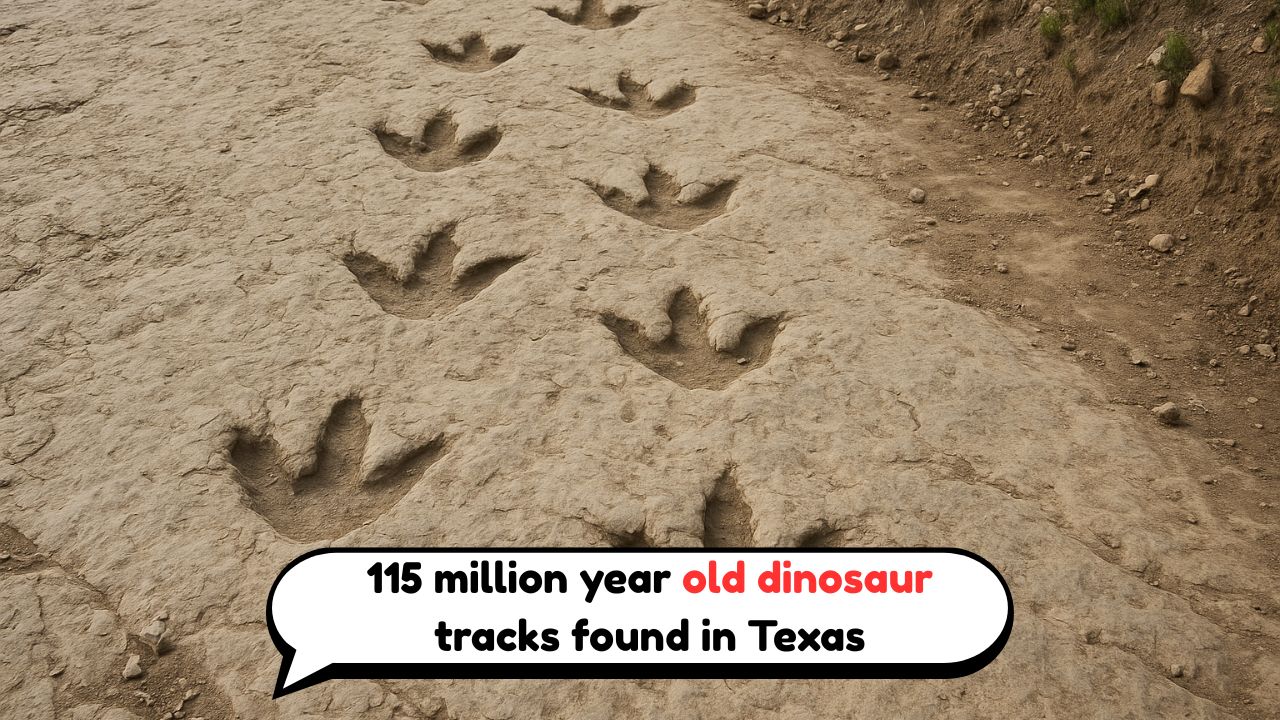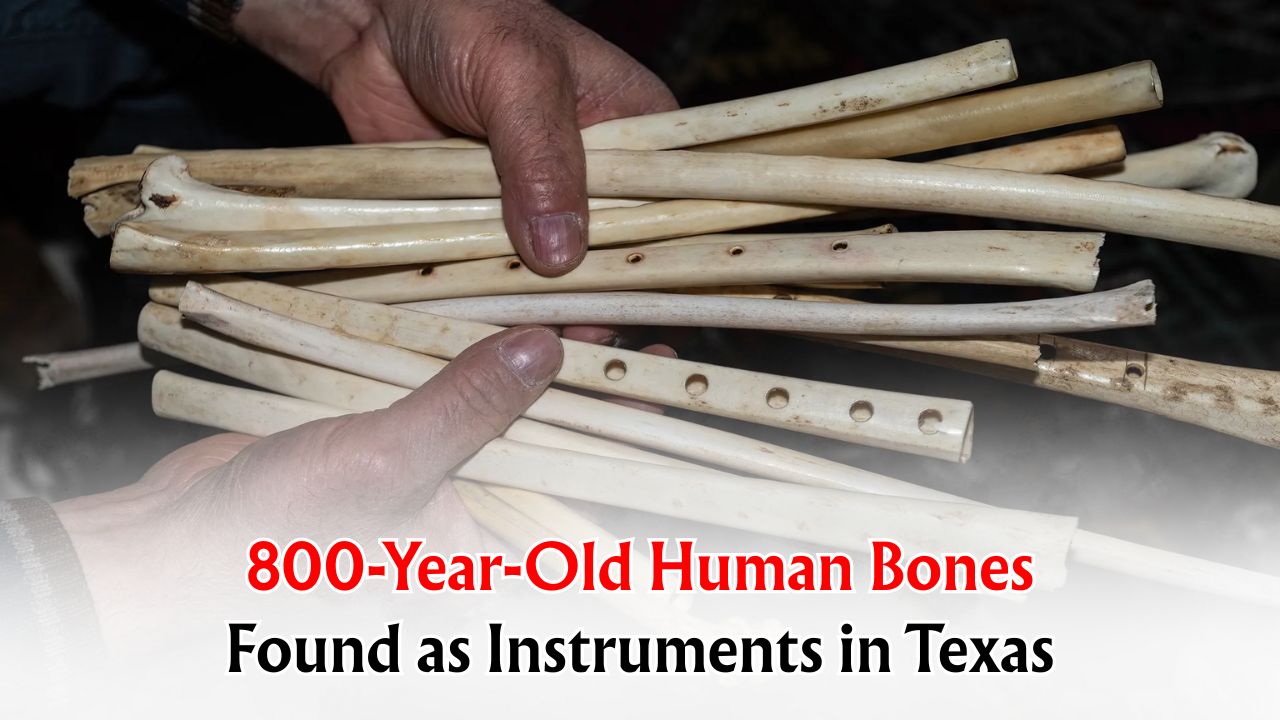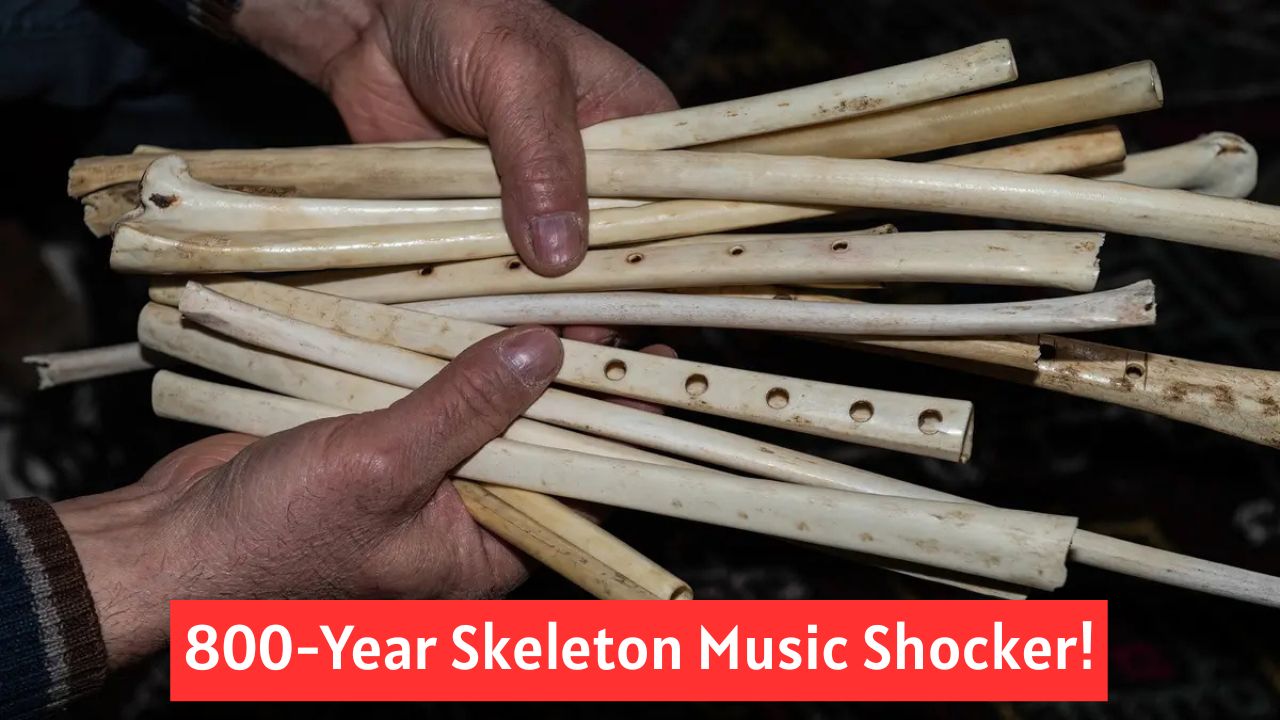800-Year-Old Human Bones – Archaeologists in South Texas have reported a striking discovery: human bone fragments that appear to have been deliberately shaped into musical instruments roughly 800 years ago. The assemblage, recovered during a controlled excavation after routine land surveys flagged unusual artifacts, includes pieces resembling whistles and flutes fashioned from long bones. Early lab work suggests these were not ad-hoc items but carefully made objects, with smoothed edges, drilled apertures, and traces of resin that may have sealed joints or mouthpieces. While the phrase “Aztec-era” points to the broader Mesoamerican timeframe (circa 1200–1500 CE), researchers stress this does not mean Aztec people lived in South Texas; rather, the craftsmanship hints at cultural influence moving through trade and ritual exchange networks. The find matters because it ties sound and ceremony to frontier regions often overlooked in narratives about music in the ancient Americas. If confirmed, these instruments would offer rare, tangible evidence of how belief, performance, and technology intertwined on the northern edge of Mesoamerica.
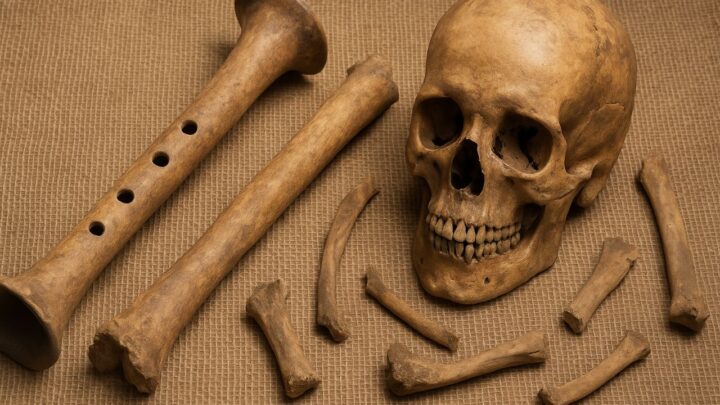
What Exactly Was Found at the Site?
The most diagnostic pieces are modified sections of long bones—likely femora and ulnae—showing a consistent toolkit of techniques: straight perforations aligned as finger holes, beveled or V-shaped mouth ends, and polishing consistent with repeated handling. Several fragments display fine incisions around hole margins, possibly to prevent cracking, and microscopic striations that match scraping with stone or metal-rich tools traded into the region. A faint reddish residue appears on two pieces; conservators suspect iron-oxide pigment used to mark ritual items, though this will require chemical confirmation. Preliminary acoustic tests with gentle airflow produced sharp, birdlike tones on one reconstructed fragment, suggesting the original makers understood bore length, aperture placement, and embouchure geometry. Context is equally telling: the items were clustered with marine shell, obsidian microblades from distant sources, and burned plant remains—an association typical of curated offerings rather than everyday refuse. Together, these details point to intentional instrument-making rather than random post-mortem damage.
Why Link the Craft to “Aztec-Era” Rituals?
“Aztec-era” here functions as a chronological and cultural shorthand. Radiocarbon brackets from associated charcoal and faunal material tentatively place the deposit in the late Postclassic period, when Central Mexican styles and ideas circulated widely via Gulf Coast and inland routes. Bone wind instruments are well documented across Mesoamerica—depicted in codices and recovered archaeologically—and the South Texas pieces echo those forms: graduated finger holes, end bevels, and resinous joins parallel finds from Central Mexico and the Huasteca. Importantly, researchers do not claim a direct Aztec presence at the site. Instead, they propose that ritual technologies—including music—moved with traders, pilgrims, or specialists, leaving local adaptations on the northern periphery. The pigments, curated context, and nonlocal materials strengthen a ceremonial reading over a purely utilitarian one. In this frame, the instruments could have served to call participants, mark phases of rites, or accompany dances—functions consistent with broader Mesoamerican performance traditions that fused sound with procession, offerings, and calendrical observances.
How Are Researchers Verifying the Interpretation?
Multiple lines of evidence are being pursued to avoid overreach. Micro-CT scanning will map internal canal geometry and confirm whether finger holes were drilled from specific angles to tune pitch. Use-wear and residue analyses (including GC-MS for resin identification) can distinguish adhesives like pine or copal and detect lipids or pigments applied during performance. Collagen sampling will anchor radiocarbon dates directly to the modified bone where preservation allows, while ZooMS peptide fingerprinting can confirm human versus animal origin without exhausting the specimens. Strontium and oxygen isotope profiling, if viable, may indicate whether the individuals grew up locally or arrived through mobility or exchange. In parallel, experimental archaeologists are building replica flutes from ethically sourced animal bone to test sound production, hole spacing, and embouchure design. Draft results will be submitted for peer review, and all claims will be tempered until independent labs replicate the measurements and the excavation records are fully published.
Cultural Sensitivity, Ethics, and Next Steps
Human-remain artifacts require exceptional care. The team is consulting with Indigenous descendant communities connected to South Texas and adjacent regions to decide appropriate handling, including options for restricted curation, digital surrogates (3D scans), or eventual reburial of the originals after documentation. Any public display—if agreed—would prioritize context and respect rather than spectacle, with sound reconstructions drawn from replicas instead of originals. Next steps include a stratigraphic micro-excavation of adjacent units to test whether the deposit marks a single event or repeated offerings, broader sourcing of nonlocal materials to map exchange pathways, and open-access archiving of scans and field notes for transparency. Beyond the technical work, the discovery invites a larger conversation: music as a technology of memory and belief. If these instruments indeed sounded in ceremony eight centuries ago, they carry echoes of relationships—between people, places, and powers—that shaped life on the northern rim of Mesoamerica.
